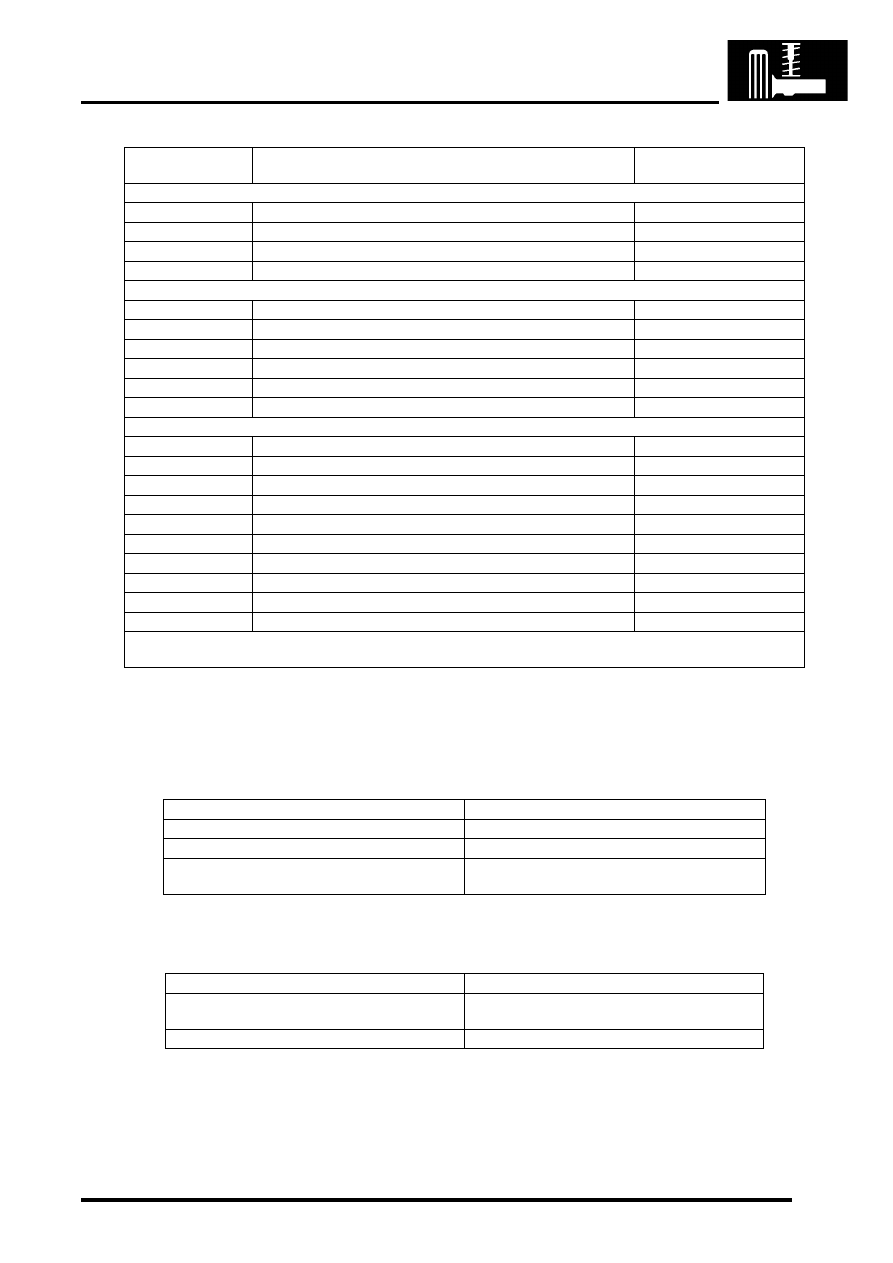Discovery 2. Manual - part 200

REAR SUSPENSION
DESCRIPTION AND OPERATION
64-19
Failure modes
Failures are indicated by the SLS warning lamp in the bottom left corner of the instrument pack illuminating
continuously in an amber colour. The following tables show the type of system failures and their effects on the system
operation.
Height sensors
Door Switch Inputs
Connector/Pin
No.
Description
Input/Output
C0504
1
Battery supply
Input
2
Ignition supply
Input
5
K line (diagnostics)
Input/Output
12
Earth
Input
C0654
1
Left height sensor supply
Output
2
Left height sensor earth
Input
3
Left height sensor signal
Input
4
Right height sensor supply
Output
5
Right height sensor earth
Input
6
Right height sensor signal
Input
C0655
1
Driver's door switch
Input
2
Passenger and tail door switches
Input
3
Left air valve
Output
4
Right air valve
Output
5
Exhaust valve
Output
6
Air compressor (SLS relay)
Output
7
Audible warning
Output
8
SLS warning lamp
Output
11
ORM switch/ORM warning lamp
Input/Output
12
Remote handset raise/lower signal
Input
Connectors and pins not listed are either not used or used by the brakes system.
BRAKES, DESCRIPTION AND OPERATION, Description.
Failure
Effect
Sensor output stuck at 5 V
Vehicle will not level
Sensor output stuck at 0 V
Vehicle will not level
Mechanical link between radius arm and sensor
broken
Vehicle will not level
Failure
Effect
Harness leads for open doors are are broken or
shorted to V Batt.
Air suspension levels when one or more doors
are open
Harness leads to door(s) shorted to earth
Air suspension will not level